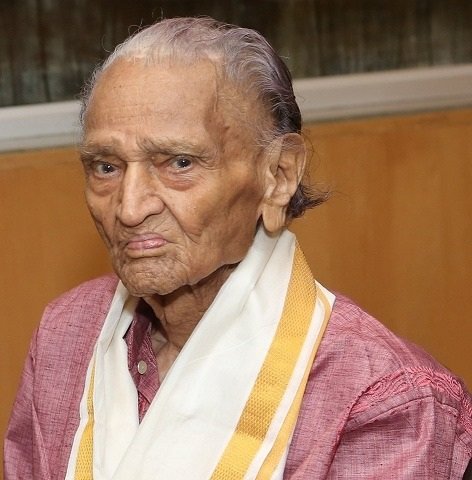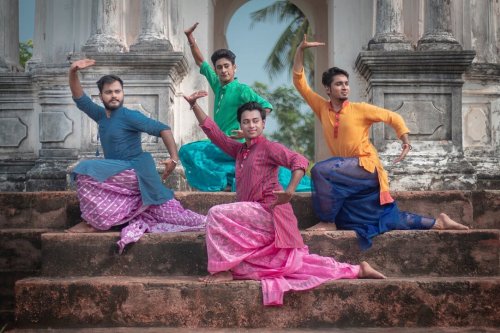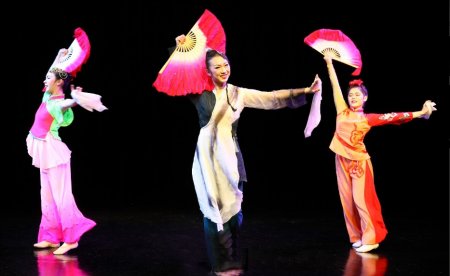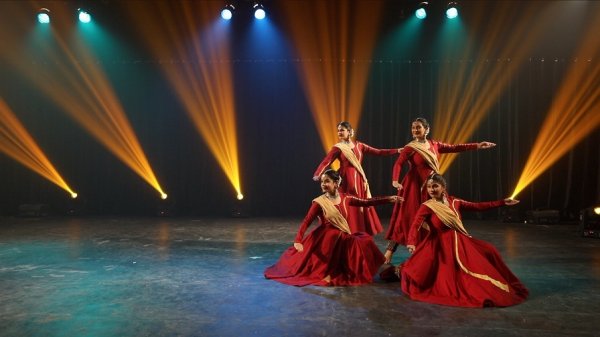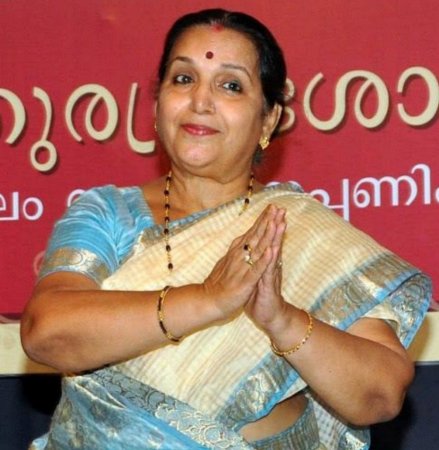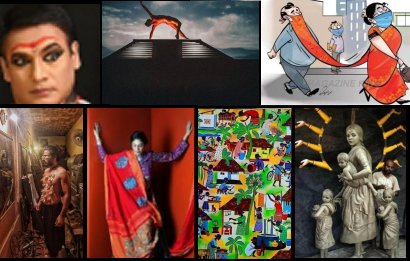Please provide your name / email id along with your comment. Anonymous and derogatory comments will be removed.
Sunday 29 November 2020
Obit/Tribute - Yog Sunder Desai (1921-2020) - Ashish Mohan Khokar
Sunday 22 November 2020
Virtual, with visual variety - The Eastern Eye: Column by Dr.Utpal K Banerjee
Saturday 21 November 2020
Shantha Ratii Initiatives presented Sparks - Footloose and fancy free with Dr.Sunil Kothari
Wednesday 18 November 2020
Article - Re-imagining the University - Dr. Kaustavi Sarkar
How can one find resilience in loss of livelihood? This article hopes to model an institutional solution to the pandemic by creating communities of practice across sectors - higher education and gig economy. Nevertheless, dance studies and arts policy scholar, Sarah Wilbur critiques "a celebratory stance toward the adaptive resiliency of artists amidst the mass estrangement and economic losses of the present" due to the high risk of exploitation of creative resilience. Noted Odissi artist Sharmila Biswas shouted out a clarion call for the professionalization of the artist fraternity especially in the pandemic induced dilemma regarding the virtual dissemination of performative content. Wilbur and Biswas both point towards artists' rights to make a living through art-making. Artistic content creation and dissemination require entrepreneurial skills.
While discussing the lack of entrepreneurial education in the gurukuls or the Indian classical dance conservatories in the backdrop of arts entrepreneurship as a discipline, Jasmine Pradeep Gajare argues for the need to instill a sense of drive and individual decision making capabilities in students for ensuing successful careers as artists. Gajare proposes the inculcation of entrepreneurial qualities, such as "awareness, sensibility and desire. An awareness of one's own potential and opportunities that either exist or can be created. A sensibility to subtle signs in communities, where dancers and other artists can make their talents and skills meaningful and finally the desire to explore, to realize one's own artistic dreams" (Gajare 362).
Tuesday 17 November 2020
Virtual and virtuoso - The Eastern Eye: Column by Dr.Utpal K Banerjee
Having roughed it out over four long decades and having simultaneously learnt her art and craft in Odissi and Chhau from the very best of gurus, she had stuck to her steely resolve to settle in India and become a really good performer, choreographer, teacher and scholar. If today she has an idyllic cottage for living, practising and teaching in Bhubaneswar near Lingaraja temple - where, among other things, she is able to offer an excellent fare of lec-dem to interested foreign visitors every year under the aegis of Odisha tourism - it goes to her immense credit to have come this far. Additionally, she has put in a credible effort in innovating new quality of choreographic content year after year and have them showcased with her students, besides writing her academic tomes. No wonder she has earned accolades.
In the online 16TH SANGAM FESTIVAL held from November 7 to 9, Ileana presented a mix of four hardy favourites resurrected from earlier years, with three new items.
Monday 16 November 2020
Roopbandh Festival - Shama Bhate's welcome initiative - Footloose and fancy free with Dr.Sunil Kothari
Rhythm Labyrinth
On 7th November, Nadroop presented Rhythm Labyrinth. In the nritta section was explorations of Pancham Savari tala of 15 beats. Its seeds were sown nearly four decades ago, and I had seen a performance at NCPA of the same nritta section. Shama Bhate in the new visual medium with help of technical team of cameramen Pradyumn Pathak, Pranav Pathak, editing by Pratik Parkhi and Apurva Sathe, sound by Prashant Urunkar, light design by Gunavardhan Soman of SGA Lights, video direction by Apurva Sathe, and participating dancers Ameera Patankar, Avani Gadre, Shivani Karmarkar and Bhargavi Sardesai, has pulled off a hat trick.
Friday 13 November 2020
Profile - Kala Vijayan - Venugopal SK
As part of my efforts to pay tributes to some of the finest gems in the field of Mohiniattam, who gave their lives and times to promote this beautiful dance form of Kerala, I wish to cover today, Kala Vijayan, one of the senior most dance teachers in Kerala, who I had a chance to interact with a few times during the past few months.
Read more in the siteWednesday 11 November 2020
Article - The Anjali Yathi - M Subhashini Vijay Santhanam
Arrangement of rhythmic percussive syllables to match a pattern that pictorially represents a shape or object is called a Yathi. This Yathi is a common phrase set up or pattern that is typically used at the very end of several time cycles of creative rhythmic meandering to make a pretty flourish that elegantly leads to the beginning of the new rhythm cycle or Samam. Typically, the pattern of the flourish or teermanam repeats thrice.
There are typically 6 accepted Yathi in practice. Dancers as well as percussionists use these throughout their works.
Monday 9 November 2020
Article - Speaking the Art of Aesthetics through the eyes - Compiled by Dr. S. Divyasena
Introduction
Bharata’s Natya Shastra is vast like an ocean and is layered with very profound thoughts and ideologies. It is a boon to researchers, dance practitioners, scholars, teachers and students. As we all know, eyes or ‘drishti’ plays a vital role in creating an emotion or Bhaava to evoke the relevant Rasa.I hope this small attempt of mine to consolidate the 178 Slokas in Chapter 8 of Natya Shastra, will act as a tool and give you an insight in understanding the importance of ‘drishti’ in Rasa. The following tables illustrate the different eye movements used to create all nine rasas, the stayi Bhaavas and how to express the vyabichari Bhaavas.
Wednesday 4 November 2020
Book Review - Evolution and mutation of dance in Eastern metropolis - Dr. Utpal K Banerjee
Kolkatar Naach, Samakaleen Nagarnritya
Aishika Chakraborty2019, Rs. 450
ISBN 978-93-86443-80-9
Gangchil.books@gmail.com
Ranjabati: A Dancer and Her World
Edited & Introduced by Aishika Chakraborty
Thema
40 Satish Mukherjee Road, Kolkata 700 020
2018 (third reprint), Rs.500
ISBN 978-93-81703-67-0
The three villages, Kalikat, Sutanuti and Govindapur -- where Calcutta was located -- came into the possession of the British East India Company only in 1690. Some scholars like to date the city's beginning from the construction of Fort William by the British in 1698, though this is debated. From 1772 to 1911, Calcutta was the glorious capital of British India. This status was lost when the capital was shifted in 1912 to Delhi. But up to India's Independence in 1947, it remained the capital of the entire Bengal. Only after Independence, Calcutta (now Kolkata) became the capital of the truncated Indian state of West Bengal.
Tuesday 3 November 2020
Profile - Kalamandalam Sugandhi - Venugopal SK
As a sequel I would now like to start a small series of write ups on a few wonderful personalities I came across during this sojourn. It's purely to satisfy my own inner self that I am writing this series and it covers only my views and observations as a tribute to these fine artistes. They are some of the veterans in the field of Mohiniattam, who have given their life and times to learn, practice, innovate and propagate the dance form to their best of abilities. I am not going by any specific order based on seniority or reputation, but by purely following my instincts.
Sunday 1 November 2020
Interview - Devi Diaries: Part 2
Inspired by the writings of Sri Aurobindo's 'The Mother,' Narthaki.com initiated DEVI DIARIES, inviting artistes to share their personal experiences and enhance it with a brief video presentation of their favorite Goddess or a real life female heroic figure.
The basic questions asked were:
Who is your favorite Goddess figure / why?
At what point in your life did the particular Goddess become your favorite? / Do you recall any particular incident connected with the Goddess?
How did you celebrate Navaratri in the past? / What are your plans for this year?
Read more in the site
Anita says...November 2020
Success is not final
Failure is not fatalIt is the COURAGE TO CONTINUE
That counts
- Winston Churchill
What are we watching? What are we reading? What are we learning? What are we having fun with? What are we struggling with? What are we unlearning? What are we thinking about? What is making us smile-laugh-weep-gasp?
With the IPL on right now, I wonder who is actually watching anything but cricket! And yes... there are so many dancers who are cricket crazy!
